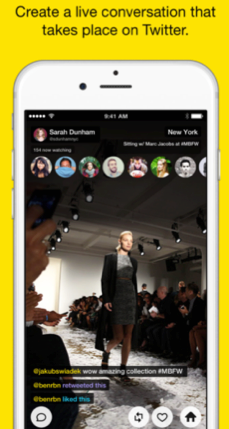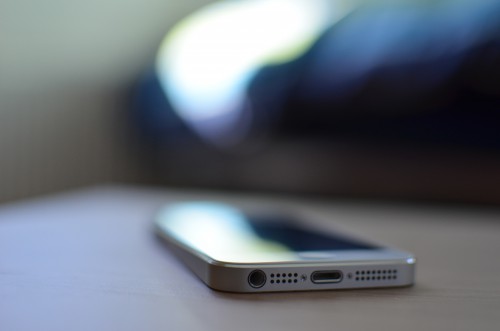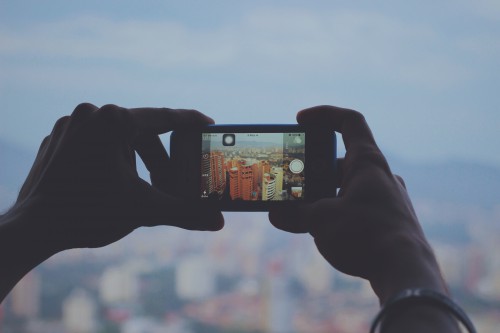
Why don’t YAYA consumers read their local newspapers anymore? It’s because the way they consume news and information isn’t on a one-day cycle. News is now on a 24-7-365 operation, thanks to social media apps such as Twitter and Facebook. YAYAs crave a sense of connection in their rapidly changing world. Even brands such as Snapchat understand the concept of instant gratification that fuels the younger Millennial generation.
All right, you’re probably thinking to yourself, “Thanks for telling me everything I already know.” But in the past week, there has been a revolutionary app that combines all of these features that YAYAs crave: Meerkat.
YAYA consumers’ days begin by absorbing new while huddled over their smartphones. They hope to soak up all of the information Twitter provides can provide before they finish their first cup of coffee. YAYAs want to see things as they happen and feel like they are a part of the story.
Meerkat is a live-streaming video app. It allows users to create their own story or jump into one that already exists.
According to TechCrunch , “at any moment, you can start a broadcast of yourself on Meerkat, which triggers a tweet of the link to your stream and a notification to any of your Twitter followers who use its app. Anyone can tune in on the web or through Meerkat, and chime in with comments that are sent as Twitter @ replies. When you’re done, your video disappears unless you save it to your phone.”
, “at any moment, you can start a broadcast of yourself on Meerkat, which triggers a tweet of the link to your stream and a notification to any of your Twitter followers who use its app. Anyone can tune in on the web or through Meerkat, and chime in with comments that are sent as Twitter @ replies. When you’re done, your video disappears unless you save it to your phone.”
What does this mean? It means that followers have to click the link in real-time, or they lose the opportunity to see the video. It reinforces FOMO, fear of missing out, and requires viewers to respond immediately to become a part of the story.
In my opinion this is comparable to Snapchat, except for the fact that it forces users to choose to interact immediately. It holds the potential to change how video is distributed and news is reported by giving people the ability to be in two places at once, an age-old adage brought to life.

As I scrolled through my Instagram feed last week, I couldn’t help but notice the repeating post of a blank women’s silhouette with the text, “Not-there.org.” Celebrities like Blake Lively and Jessica Alba posted the image to their accounts in honor of celebrating International Women’s Day. Little did I know that these celebrities’ posts were part of a much bigger movement captivating the social sphere in an effort to raise awareness about gender equality.

The spot “We’re Not There Yet,” released by The Bill, Hillary & Chelsea Clinton Foundation, features the voices of Amy Poehler, Sienna Miller and Cameron Diaz discussing how even though it is 2015, women still don’t have the same rights as men in the work place. In an effort to raise awareness, brands such as Under Armour and Allure Magazine supported the movement, displaying ads and magazine covers without female characters represented.

So what does this mean for YAYA women? According to the Institute for Women’s Policy Research, in 2013, female full-time workers made only 78 cents for every dollar earned by men, a gender wage gap of 22 percent. In addition, if change continues at the same pace as it has for the past fifty years, it will take 44 years, until 2058, for women to reach pay parity.
The YAYA generation is hearing this message loud and clear, and powerful advertising such as the “We’re Not There Yet” campaign is an effective way to influence them. YAYA consumers want authenticity; they want to hear the truth. And the truth is that women to this day are still not getting fair and equal treatment. This is a cause that all YAYA women can rally around as they enter and thrive in the work place.
Despite the impact of International Women’s Day and the shocking statistics that were released, the reality television show, The Bachelor, decided to drop the news that the next season of The Bachelorette would feature not one, but two bachelorettes. The response? Outrage that the show would belittle women that way, and even moreso that they would announce the change a day after International Women’s Day. This anger is proof that the “We’re Not There Yet” campaign is changing people’s minds and inspiring the YAYA market to believe in making a change and fighting for gender equality.

Besides relaxing on the beach this past spring break, I was also looking forward to getting away from my phone’s incessant rings, dings and vibrations. This would have been possible, except for one major problem — I couldn’t put my phone down.
It’s no secret that fellow YAYA consumers are just addicted to smartphones. According to a July 2014 Nielsen study, 18- to 24-year-olds spend the most time out of any age group on smartphone apps, clocking in more than 37 hours each month on an average of 28 apps.
At first, this sounded like a ridiculous amount of apps and time. But after I thought about the way I’d used my phone over spring break, the statistic suddenly didn’t seem so crazy. After all, I downloaded the Turbulence Map app to ease my fear of flying. I used a mobile boarding pass for my flights. I booked Uber rides all around town. I Venmo-ed my friends for picking up the bill at dinner. I probably spent more time documenting the ocean view with my phone’s camera than actually stopping to look at the beach. And that was just the first day.
Clearly, smartphones have eliminated the need for so many things, like disposable cameras, maps and a good taxi wave. Their next victim? Our wallets.
Brands can expect the smartphone-obsessed YAYA market to embrace mobile payment apps in the very near future. While it’s true that current millennial usage of mobile payment apps like Google Wallet or Apple Pay is low, experts anticipate a change in 2015.
According to a recent FICO study, 32 percent of millennials said that they are “very likely to use mobile payment providers in the next 12 months,” compared to just 8 percent of respondents aged 50 or over who said the same. What’s more, a study by J. Walter Thompson found that 44 percent of millennials would rather use their mobile phone than cash to pay for small items, and that 70 percent think “the way we pay for pay for things will be totally different in 5 years.” Seventy percent! I can already picture my future explaining to my children what a wallet was.
So if there is one thing brands can bank on, it’s that millennials will become increasingly dependent, both mentally and financially, on their smartphones. My advice to brands looking to appeal to the YAYA market: give us opportunities to pay with our beloved smartphones and reap the benefits. We’ll not only be impressed with your staying ahead of the curve — we’ll thank you for it with our dollars (hopefully, with a simple swipe!).

 , “at any moment, you can start a broadcast of yourself on Meerkat, which triggers a tweet of the link to your stream and a notification to any of your Twitter followers who use its app. Anyone can tune in on the web or through Meerkat, and chime in with comments that are sent as Twitter @ replies. When you’re done, your video disappears unless you save it to your phone.”
, “at any moment, you can start a broadcast of yourself on Meerkat, which triggers a tweet of the link to your stream and a notification to any of your Twitter followers who use its app. Anyone can tune in on the web or through Meerkat, and chime in with comments that are sent as Twitter @ replies. When you’re done, your video disappears unless you save it to your phone.”


